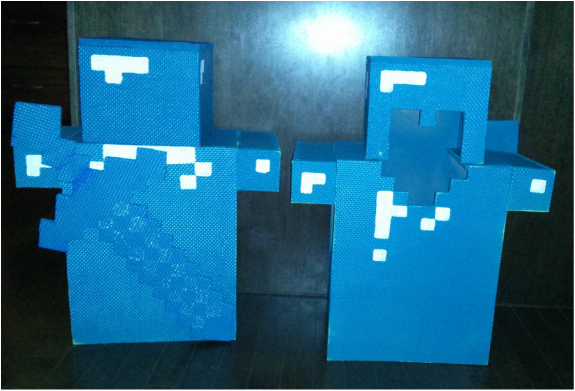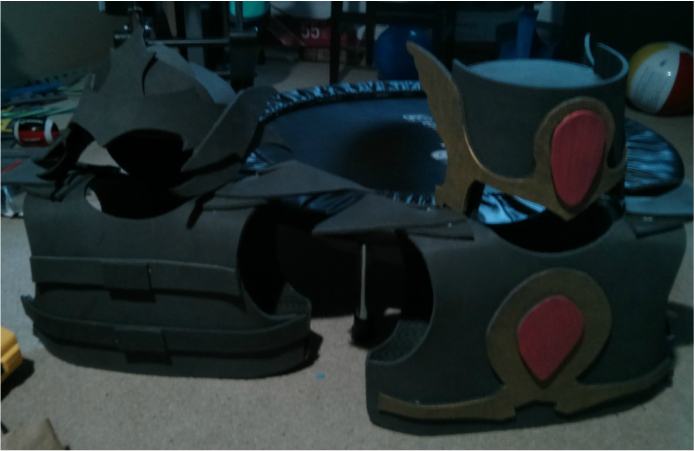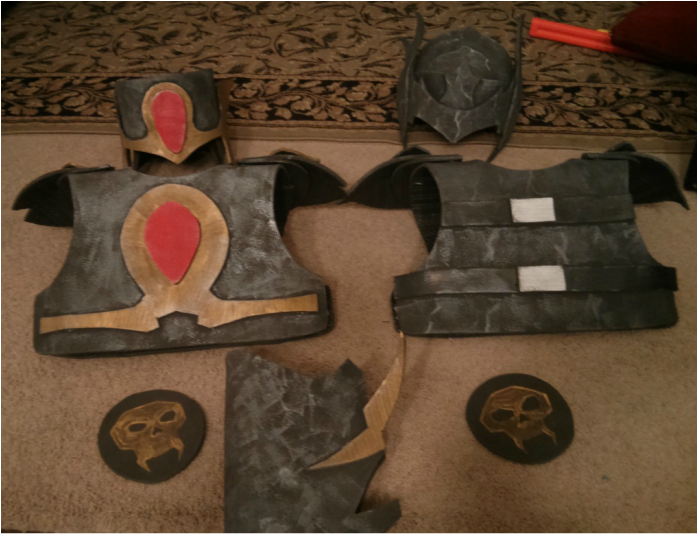|
So, I’ve been trying to get my Huion graphics tablet to work properly on my main PC for a couple of days now. It works fine on the laptop, and presumably, would work properly on any other computer I hooked it up to. The pen tracks without glitches or stutters, but there is no pressure sensitivity. What is more baffling is that I had been using it only a few days ago, and it was working normally.
While I have been able to determine that this is not a hardware problem, I still haven’t been able to resolve the issue. What probably happened is that a windows update of microsofts own tablet drivers have done something to severely bork the drivers for this particular tablet. Sleuthing out what files to delete and what components to uninstall and reinstall to correct the issue has proved difficult. I know I’ve said it here before, but I’m the type of person who has an abnormally high tolerance for this sort of digital nonsense. I won’t hesitate to enter the command line or dig around in the windows registry to fix a problem. Reinstalling windows is a bit of a pain, but not out of the question. I made this PC, and if need be, I’ll break it to get it working the way I want. I realize this isn’t the attitude of most computer users, and even fewer artists. As a function of the work, artist tend to know their tools better than a lot of professions. When the core of your job is the subtle manipulation of a brush, knife, or guitar, you become very familiar with the edges of those tools. The things that they are capable of, and how you can manipulate them to be more than they appear. A computer is a magnificent tool, a tool that can change and shift from one task to the next. It’s the anything machine. It’s also a black box, where much of what it does is not understood by the person manipulating it. There is not one person alive who understands every feature and part of the Windows operating system. The same is true of the Mac OS and Linux. Maybe, at one time, there were a handful of engineers and designers that could tear down, clean out, and reassemble a computer at it’s base level. Now it takes legions, and still problems slip through the cracks. Countless artist use computers to speed up traditional methods of working, and create things that would be impossible without the use of a computer. They do so knowing that they have to give up a small amount of control. Mastery of the tool will never be absolute. I can build my own brushes from birch sticks and hair. I can’t use a computer without leaning on millions of hours of other peoples work. I can fix broken tools, but I can only fix a computer by venturing past the realm of my training. To be clear, I don’t think that this is inherently good or bad. Just different. Different to what centuries of artists had been use to. But I do think that the effort to make tools “that just work” is a dangerous one. Because they won’t. They won’t just work. They will break, like tools do, like tools always have. An effort should be made instead, to teach us how to fix them, or failing that, who to ask for help in the repairs.
0 Comments
Best Games - DoDonPachi
speeding wings of light screaming flurry of bullets stillness equals death That’s good game design!
I was sitting on the edge of the bed staring at the widely spread phosphors of a cheap 20 inch color TV. My friend had recently moved his bedroom from the the highest point in his parents aging, but immaculate farm house, to the cool dry of the basement. It’s the move all teenage boys are eager to make. The yearning for the cave lifestyle must be deep in our cellular makeup. He could have stopped there and I would have still thought this new abode lined with Iron Maiden and ACDC emblems, was comfortably epic. He went one further, and picked up an old TV from a relative and bought a brand new SEGA Genesis. I still wasn’t fully convinced that a game console was a thing you could own. We would regularly rent a console and a stack of games from the video store for weekends at a time. It would get hooked up and we would spend as many hours as humanly possible trying to play through the games. The notion that a current generation game machine could be set up in your own room every weekend! Absurd! I mean how would that even work. I was staring at the mass of blue pixels, Sonic impatiently tapping his foot waiting for the player to get on with playing already. And I said “That’s good game design!” I had next to no idea what game design was, what was required to tune a jump so that it had just enough float, just enough gravity. I didn’t understand what it took to balance rules and movement speeds. I just saw a hedgehog standing there tapping his foot and I equated that with good design. I still think that I was right. Design is entirely about details. The ones you include, the ones you cut. The reason you keep the details that you do. How those details fit into the whole. You could pick up any three games from the same era as Sonic, and at least one of the other two would be about jumping. The minor differences between those jumping games, platformers is the accepted term, were all that set them apart. They all contained elements of running and jumping, they all had enemies that you could either jump on or attack to dispatch, and they all had platforms floating in space, self suspended by magical programming fairy dust. The only differentiators they had going for them were the minor details. Small adjustments in attitude and style. Sonic, the character, knows how you should be playing his game. When you wait around he is unhappy and impatient. When you push him forward, he flies, he swoops, he soars. For a game to suggest the most fun way to play it, not demand, not enforce, just suggest. That is good game design. Last year my sons said that they wanted to go as zombies for halloween, but not the regular raggy clothes and dark makeup around the eyes type zombies, Minecraft zombies. Minecraft zombies are nondescript, brown and green boxes with arms and legs. A full body costume consisting mostly of unbendable boxes that I knew they would find to uncomfortable to wear wasn’t going to happen. I managed to talk them down to a set of diamond Minecraft armor. I didn’t know exactly how I was going to accomplish that. Cardboard boxes, cloth attached to a dowel structure. Cardboard would never hold up to how my kids were going to abuse these costumes. I know how to sew, but not competently enough for nice looking costumes. I eventually opted for foam mats and this was the result. Recently they game of choice around here is Terraria, so when we asked what they wanted to be for halloween, the answer wasn’t very surprising. They both have different opinions on what they coolest looking terraria armor is, so I knew I would have at least two challenges to tackle. That’s the thing. If you ask me to build something, and I am pretty sure I can do it, but I don’t really know how yet, i’m hooked. I could have taken them to the store and bought a costume, or put one together out of the stuff we had kicking around, but I was presented with the opportunity to build something new, and I couldn’t resist. Since I wasn’t planning ahead, I never took any pictures of the process, but this is the short breakdown of how I built this years halloween costumes. I started out with the art from the game as reference. I made a swipe at the pixilated blocky look last year and I found that pixilated stuff just doesn’t easily translate into real world items. I did a few rough sketches of what those sprites could represent, if they really existed and were scaled up to kid size. I found working with EVA foam incredibly easy last time so this time I went and found a giant 4’x6’ rolled up shop mat. The foam was a bit thinner than your standard foam tile mats, but that just made bending the foam around curves easier. Once I was a small way into the process I did some searching around on the internet for costuming tutorials. As it turned out, this sort of foam is what people use to make costumes all the time. Not knowing this before I jumped in made me feel equal parts clever and dumb. But I’m sort of used to that. I hand drew some paper patterns so I could trace them down onto the foam, and then just started cutting. I used either a utility knife or scissors for all the cutting. I assembled the pieces as I went, cutting, adjusting, and adding detail as needed. All the assembly was done with hot glue and some elastic strap I got at the dollar store. Since these were supposed to look like armor I didn’t bother with coating the foam with anything before painting, and just let the original dark grey stand as the base color. The painting was all acrylic and sparkly poster paint we had here. I used a sponge, and some cheap brushes to do all the painting, going over some areas with a dry brush to even out the details, and hide my mistakes. In the end, they turned out okay, and they should stand up to most of the nerf and lightsaber battles that go on here throughout the rest of the year.
Of course this also means that I went and raised the expectation bar one notch, and next year when they want to wear a full working ironman suit with firing missiles and LED eyes, I’ll probably consider it briefly before steering them toward Hawkeye or Madripoor Wolverine. I know that I do it to myself, but I would be lying if I said it isn’t fun. |
Archives
February 2024
Categories |
Owen McManus






 RSS Feed
RSS Feed